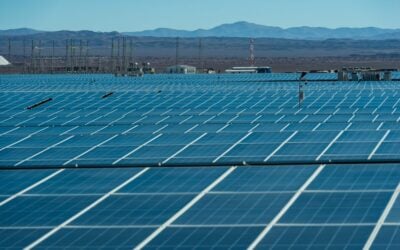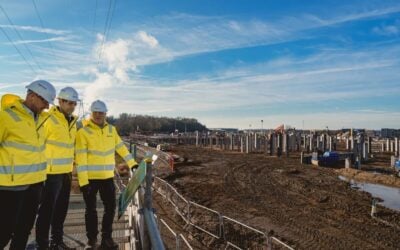As the company name suggests, Sunverge’s storage was developed with renewables integration in mind, but the latest VPP trial in Kentucky will go further in testing what storage can do. Image: Sunverge.
Following the announcement of a ‘virtual power plant’ pilot in Australia, Sunverge energy storage systems have been selected for another trial project to test the capabilities of customer-sited storage, this time in the US.
The latest project in Kentucky will see energy storage installed at 165 homes for Glasgow Electric Plant Board, a small municipal utility with around 14,000 customers. The utility needs to drive down its emissions when electricity demand is at its peak. Ultimately, Glasgow Electric Plant Board wants to cut down the amount of conventional thermal generation needed to meet the peaks.
Earlier this summer, Australian utility Ergon Energy was selected by ARENA (Australian Renewable Energy Agency) to trial the aggregation of 33 Sunverge customer-sited storage devices in Queensland, West Australia to help manage the addition of renewables to local networks.
While small-scale, customer sited (behind-the-meter) energy storage in particular tends to be thought of in terms of how it can be used to integrate variable power sources such as solar, the latest trial focuses squarely on proving the value of distributed storage to the network.
Try Premium for just $1
- Full premium access for the first month at only $1
- Converts to an annual rate after 30 days unless cancelled
- Cancel anytime during the trial period
Premium Benefits
- Expert industry analysis and interviews
- Digital access to PV Tech Power journal
- Exclusive event discounts
Or get the full Premium subscription right away
Or continue reading this article for free
Sunverge CEO Ken Munson said that the trial made the utility Sunverge’s “first customer to use distributed storage without solar to create significant network value”.
The project has been described, once again, as a Virtual Power Plant in that the installed systems are aggregated together by a system operator, meaning they effectively act in concert as one system. This system will charge with cheap electricity, either at night or at other times of low demand and lower relative cost of generation. The systems will also provide uninterruptible backup power in the event of outages.
Munson of Sunverge described the local utility as a “pioneer” and said its example could be followed by others – albeit in specific circumstances.
“Glasgow is a pioneer and should serve as a model for other utilities that serve rural or isolated communities, where intelligent storage can play an important role when generation options are limited and where there are frequent weather-related power disruptions,” Munson said.
The promise offered by virtual power plants is being tested elsewhere too, for various applications, which include but are not limited to mitigating the impact of variable renewable generation on networks. German utility Lichtblick has partnered with a number of storage companies including Sonnenbatterie to trial its “swarm” concept which can provide frequency regulation for local grids, while US commercial energy storage provider Stem has been selected to enhance the reliability of regional electricity supplies in California.
Matt Roberts, executive director of the US-based Energy Storage Association told PV Tech Storage in June that VPPs are likely to become a significant part of the energy storage landscape going forward. While challenges remained, particularly in the areas of developing software and network protocols to control them, VPPs, said Roberts, “can do big things for the grid”. Similarly, GTM Research analyst Omar Saadeh said that “VPPs are one way utilities could use storage to meet “a higher demand for rapidly deployable grid flexibility”.
Read “Rise of the Virtual Power Plants” a feature article in Volume 3 of PV Tech Power which looks at the aggregation of behind-the-meter storage devices for renewables integration and network services.





